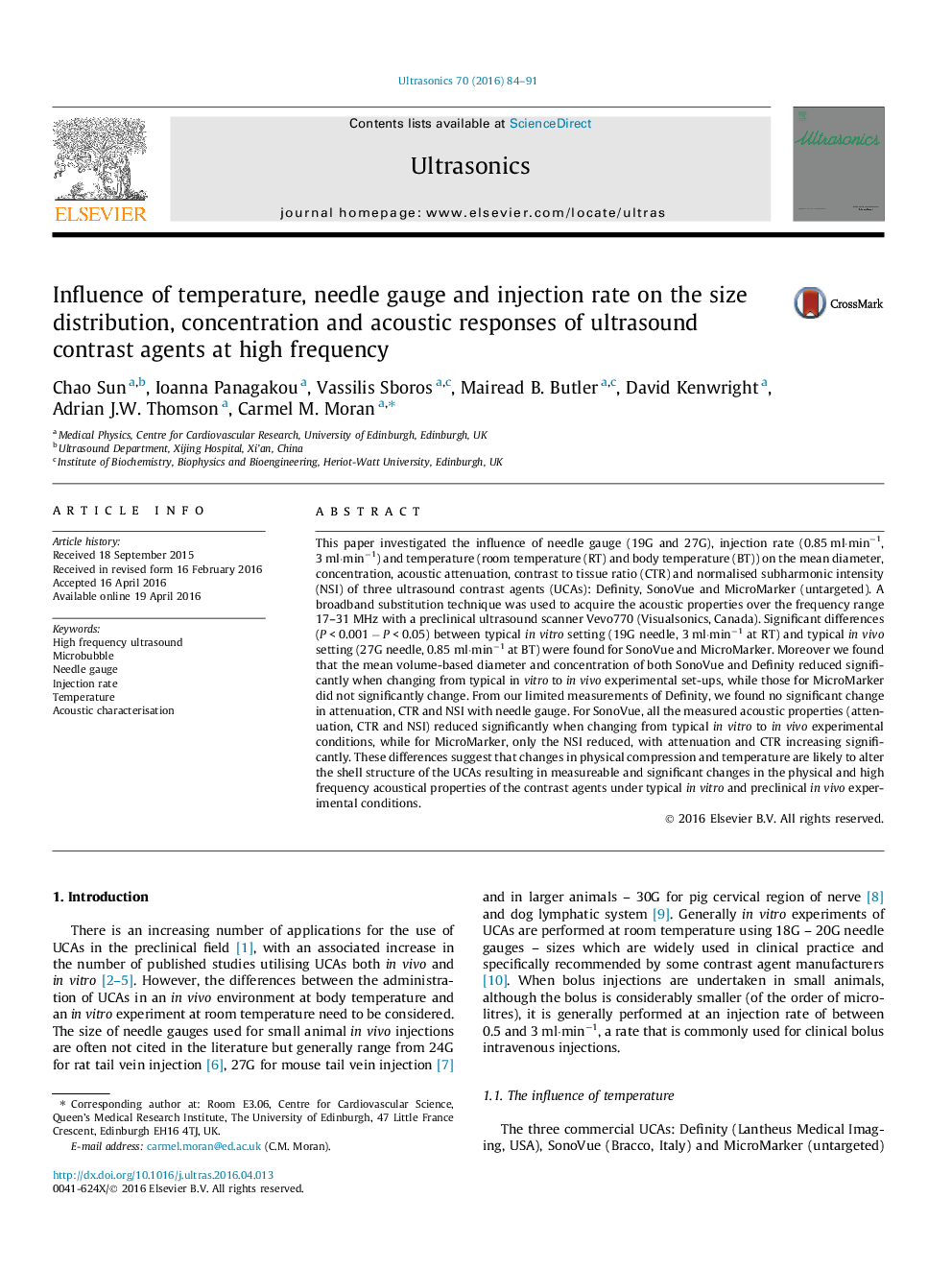| Article ID | Journal | Published Year | Pages | File Type |
|---|---|---|---|---|
| 8130219 | Ultrasonics | 2016 | 8 Pages |
Abstract
This paper investigated the influence of needle gauge (19G and 27G), injection rate (0.85 ml·minâ1, 3 ml·minâ1) and temperature (room temperature (RT) and body temperature (BT)) on the mean diameter, concentration, acoustic attenuation, contrast to tissue ratio (CTR) and normalised subharmonic intensity (NSI) of three ultrasound contrast agents (UCAs): Definity, SonoVue and MicroMarker (untargeted). A broadband substitution technique was used to acquire the acoustic properties over the frequency range 17-31 MHz with a preclinical ultrasound scanner Vevo770 (Visualsonics, Canada). Significant differences (P < 0.001 â P < 0.05) between typical in vitro setting (19G needle, 3 ml·minâ1 at RT) and typical in vivo setting (27G needle, 0.85 ml·minâ1 at BT) were found for SonoVue and MicroMarker. Moreover we found that the mean volume-based diameter and concentration of both SonoVue and Definity reduced significantly when changing from typical in vitro to in vivo experimental set-ups, while those for MicroMarker did not significantly change. From our limited measurements of Definity, we found no significant change in attenuation, CTR and NSI with needle gauge. For SonoVue, all the measured acoustic properties (attenuation, CTR and NSI) reduced significantly when changing from typical in vitro to in vivo experimental conditions, while for MicroMarker, only the NSI reduced, with attenuation and CTR increasing significantly. These differences suggest that changes in physical compression and temperature are likely to alter the shell structure of the UCAs resulting in measureable and significant changes in the physical and high frequency acoustical properties of the contrast agents under typical in vitro and preclinical in vivo experimental conditions.
Related Topics
Physical Sciences and Engineering
Physics and Astronomy
Acoustics and Ultrasonics
Authors
Chao Sun, Ioanna Panagakou, Vassilis Sboros, Mairead B. Butler, David Kenwright, Adrian J.W. Thomson, Carmel M. Moran,
